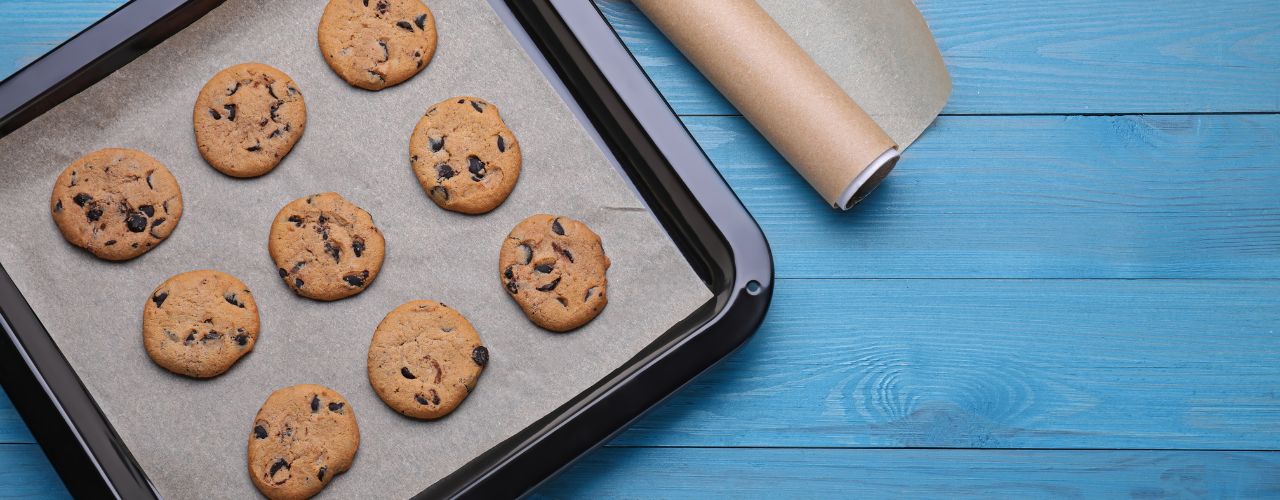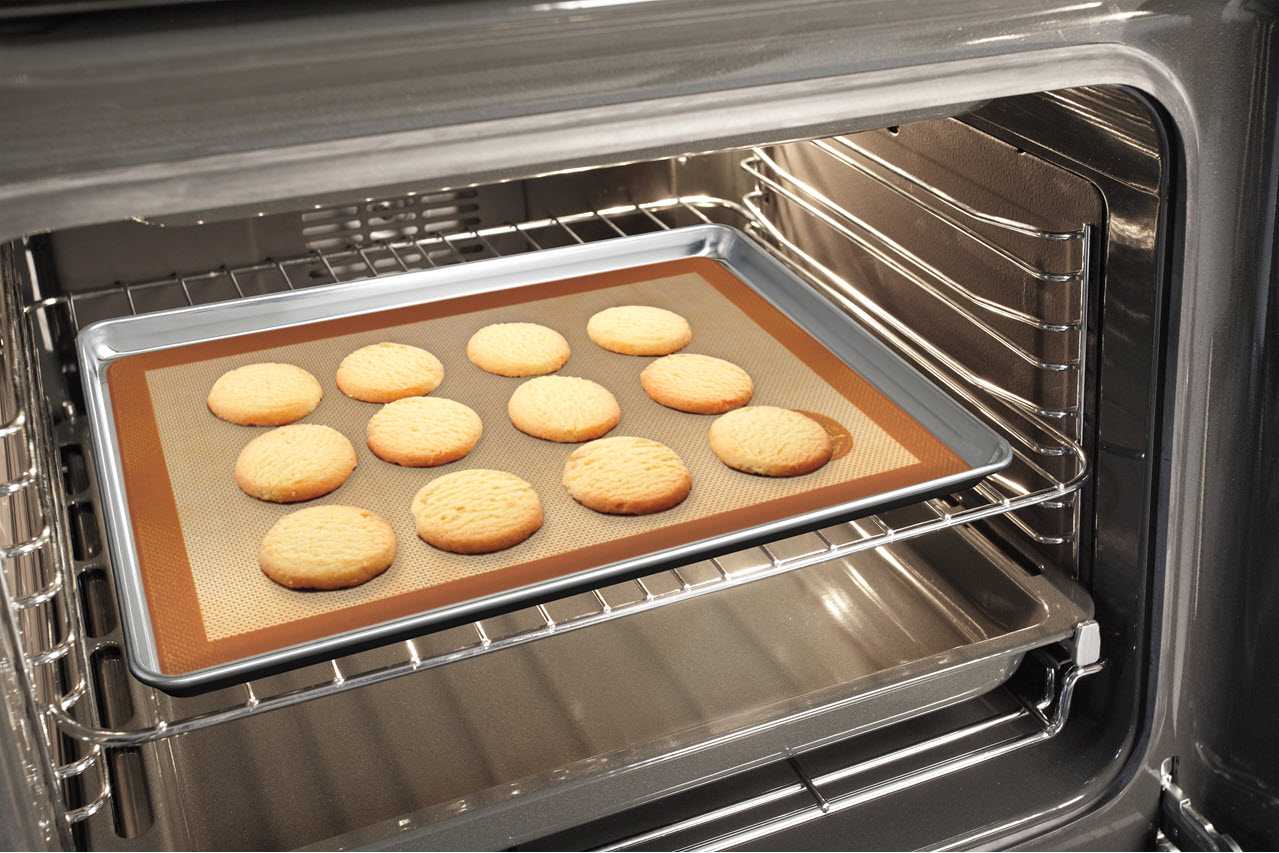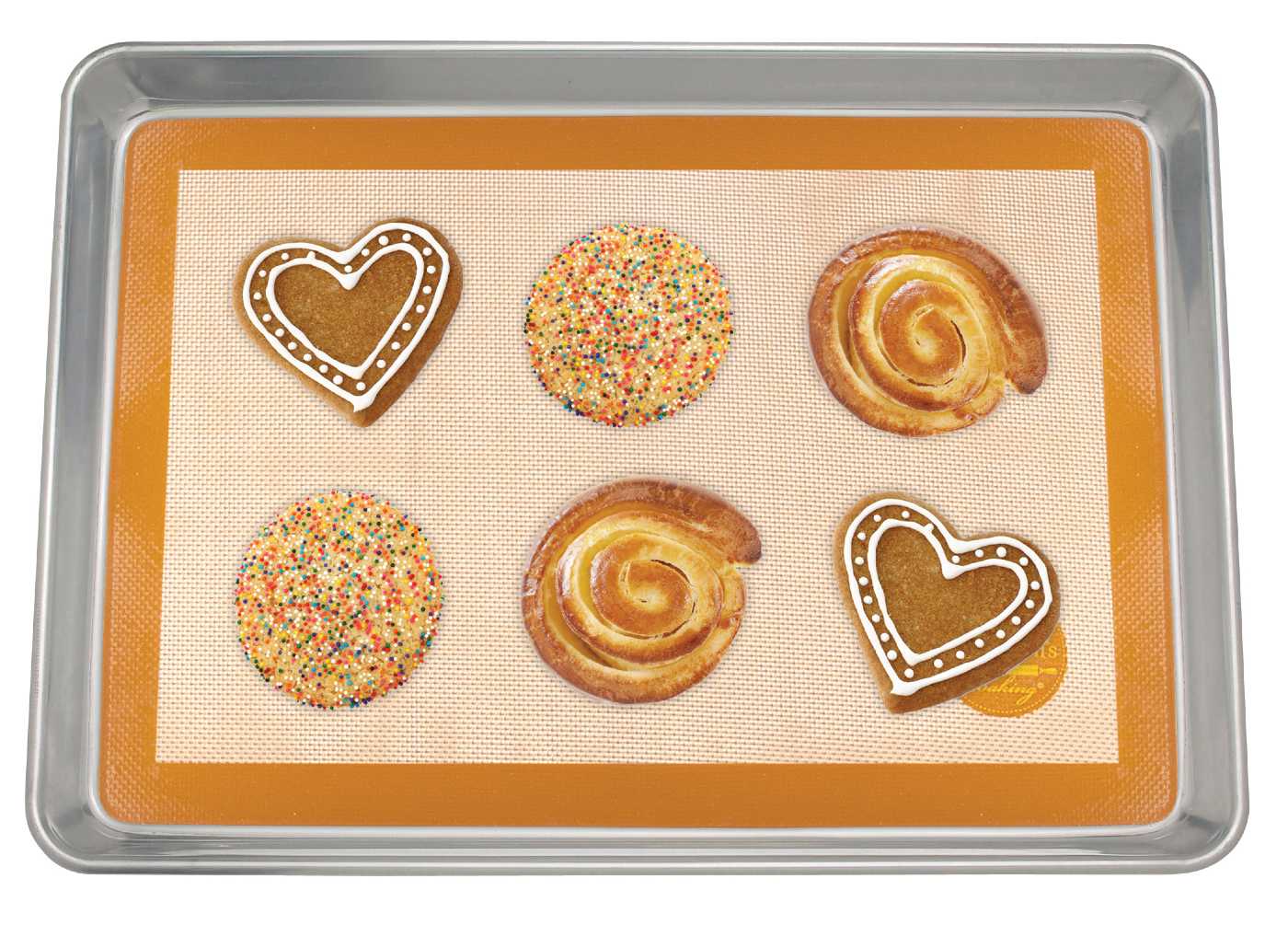Silicone Baking Mats vs Parchment Paper: Which is for you?
Posted by The BYC Team on Sep 8th 2023
Silicone Baking Mats vs Parchment Paper: Which is the Ultimate Baking Companion?
Do you find it frustrating to clean your baking trays after every use? Are you looking for an easier baking cleanup experience? Well, you're in luck! We have a solution that might just be perfect for you - silicone baking mats or parchment paper. But which one is better for your kitchen? Keep reading to find out and gain some serious baking wisdom!
Silicone baking mats have gained popularity in recent years, promising a non-stick and reusable alternative to traditional parchment paper. These mats are made from food-grade silicone and provide a smooth surface for your baking adventures. On the other hand, parchment paper has been a tried-and-true companion for bakers for decades. It offers quick and easy cleanup and prevents cookies and pastries from sticking to the baking tray.
Which option is better for your baking needs - silicone baking mats or parchment paper? Let's look at their pros and cons, including their heat resistance, durability, eco-friendliness, and versatility. By the end of our exploration, you'll have the knowledge to choose the ideal kitchen companion for your baking endeavors. So, let's dive in and discover your perfect baking companion!
Pros and Cons of Silicone Baking Mats
Silicone baking mats have become increasingly popular among home bakers for several reasons. First and foremost, these mats provide a non-stick surface that allows you to remove your baked goods easily. Whether baking cookies, pastries, or even sticky candies, you can rely on a silicone baking mat to prevent any sticking mishaps. Additionally, the non-stick properties of silicone mats eliminate the need for greasing or using cooking sprays on your baking trays, sheet pans, or cookie sheets, making them a healthier option.
Another advantage of silicone baking mats is they are reusable. Unlike parchment paper, which is only meant for single use, silicone mats can be used repeatedly, saving you money in the long run while reducing waste. By avoiding the need to purchase parchment paper continuously, you are also opting for an eco-friendly option. With proper care and maintenance, silicone baking mats can last for years.
Baking mats made of silicone are great at evenly distributing heat. They prevent hot spots that can ruin your baked goods. These mats are made using food grade silicone and fiberglass mesh. The mesh and silicone work together to ensure that heat is distributed evenly, resulting in perfectly baked and golden brown treats.
However, it's important to consider the drawbacks of silicone baking mats. While they are heat resistant and can withstand high temperatures, which makes them perfect for baking, silicone mats are generally unsuitable for broiling or using under the broiler, as they cannot withstand direct high heat over 480 to 550 degrees, depending on the manufacturer. Silicone baking mats are generally rectangular and cannot be modified to fit in round and square cake pans like parchment paper can. Another drawback is that the initial investment in silicone baking mats is higher than purchasing parchment paper.
In conclusion, silicone baking mats offer a non-stick and reusable alternative to parchment paper, making them a convenient choice for many bakers. However, their broiling limitations, shape and size, and initial investment should be considered when deciding if it's your ultimate kitchen companion.
Pros and Cons of Parchment Paper
Parchment paper has been a staple in every baker's kitchen for decades. Its quick and easy cleanup properties have made it a trusted companion for preventing baked goods from sticking to the sheet pan or baking tray. Parchment paper provides a non-stick surface that ensures easy removal of cookies, cakes, and other delicate pastries. Like silicone baking mats, it also helps to distribute heat evenly, resulting in perfectly baked goods.
One of the major advantages of parchment paper is its versatility. It can be used for many baking applications, from lining cake pans to creating a pouch for steaming fish or vegetables. It is also less expensive than a silicone baking mat.
However, parchment paper does come with some downsides. Unlike silicone baking mats, parchment paper is not reusable and needs to be discarded after each use. This contributes to waste and the need to buy new parchment paper rolls. Additionally, parchment paper can sometimes tear or crinkle, especially when dealing with wet or greasy ingredients, which may result in less-than-perfect baking results. It is not suitable for making candies because sugar can fuse to it. Additionally, parchment paper, like silicone mats, is unsuitable for broiling.
In summary, parchment paper offers quick and easy cleanup, even heat distribution, and versatility in the kitchen. However, its disposable nature is unsuitable for broiling and candy making, and its potential for tearing and crinkling should be considered when deciding if it's your ultimate baking companion.

Heat Resistance and Durability Comparison
When it comes to heat resistance and durability, both silicone baking mats and parchment paper have their own strengths and limitations. Silicone baking mats are known for their ability to withstand high temperatures, usually up to around 480°F to 550°F. This makes them suitable for most baking applications, including cookies, pastries, and even roasting vegetables and sheet pan dinners.
On the other hand, parchment paper has a lower heat resistance compared to silicone mats, typically around 425°F. While this temperature range is generally sufficient for most baking needs, it isn't suitable for high-heat cooking methods. However, parchment paper excels in its versatility. It can be used for a wide range of baking applications, from lining cake pans to creating a pouch for steaming fish or vegetables.
In terms of durability, silicone baking mats have the upper hand. With proper care and maintenance, these mats can last for years, making them a long-term investment. On the contrary, parchment paper is meant for single-use and is discarded after each baking session. This results in more purchases and increased waste.
Considering both heat resistance and durability, silicone baking mats are the winner in terms of longevity and ability to withstand high temperatures. However, parchment paper's versatility should not be overlooked, especially because it can be used for many baking needs.
Non-Stick Properties of Silicone Baking Mats vs Parchment Paper
The non-stick properties of both silicone baking mats and parchment paper are what make them invaluable tools in the kitchen. Silicone baking mats are specifically designed to provide a non-stick surface. They are even ideal for working with sticky materials like batter, taffy, caramel, dough, and any other sticky baking situation you can imagine. This eliminates the need for greasing or using cooking sprays, making it a healthier alternative.
Similarly, parchment paper's non-stick properties prevent your cookies, cakes, and pastries from sticking to the tray. This makes it easier to remove delicate baked goods without any damage or breaking. Parchment paper is a barrier between the baking tray and the food, preventing any potential sticking or burning.
While both silicone baking mats and parchment paper offer non-stick properties, it's important to consider the specific requirements of your baking recipes. Some recipes may call for greasing the baking tray, which may not be necessary when using silicone mats. On the other hand, parchment paper may be preferred for recipes that require an easy way to remove the baked good from a cake or square baking pan.
In conclusion, both silicone baking mats and parchment paper provide non-stick surfaces that make baking a breeze. The choice between the two will depend on your personal preferences and the specific requirements of your recipes.
Ease of Cleaning and Maintenance
One of the major advantages of silicone baking mats is their ease of cleaning and maintenance. After using a silicone mat, you can simply wipe it clean with a damp cloth or sponge. For more stubborn residue, you can soak the mat in warm soapy water and gently scrub it with a non-abrasive brush. Once clean, silicone mats can be rolled up for easy storage.
When it comes to cleanup, parchment paper is the most convenient option. After each use, you can easily remove it from the baking tray and dispose of it, eliminating the need for additional cleaning or maintenance. However, keep in mind that parchment paper cannot be reused, so make sure to have a supply of it on hand.
In terms of long-term maintenance, silicone baking mats require minimal effort. With proper care, such as avoiding sharp objects and folding, these mats can last for years. On the contrary, parchment paper has no long-term maintenance because it is discarded after each use. However, there is an ongoing expense for parchment paper.
Considering the ease of cleaning and maintenance, silicone baking mats offer a more sustainable and long-term solution. However, parchment paper provides the ultimate convenience for quick and effortless cleanup.
Cost Comparison: Silicone Baking Mats vs Parchment Paper
When it comes to baking, silicone mats and parchment paper have different costs and benefits. Silicone mats require a higher initial investment, but they can save you money in the long run by being reusable and eliminating the need for purchasing parchment paper. However, parchment paper is relatively inexpensive and easy to find in rolls or pre-cut sheets. While the cost of parchment paper can add up over time, it offers convenience and ease of use.
In summary, silicone baking mats offer long-term savings and reusability but have a higher upfront cost. Parchment paper is a more affordable option, but ongoing purchases can add up. Consider your budget and how often you bake when deciding which option is more cost-effective.
Choosing the Right Option for Your Baking Needs
After exploring the pros and cons of silicone baking mats and parchment paper, it's time to decide your unique baking needs. If you prioritize convenience, quick cleanup, and the ability to fit various pan shapes and sizes, parchment paper may be your ideal kitchen companion. Its affordability and versatility make it a popular choice among bakers.
On the other hand, if you value eco-friendly products, reusability, and non-stick properties, silicone baking mats are worth considering. These mats offer long-term savings, reduced waste, and a smooth surface for your baking endeavors.
Ultimately, the choice between silicone baking mats and parchment paper comes down to personal preference and the specific requirements of your recipes. Consider factors such as durability, non-stick properties, ease of cleaning, environmental impact, and cost when making your decision. Whether you opt for parchment paper's convenience or silicone mats' sustainability, both options will undoubtedly enhance your baking experience.
Conclusion: The Ultimate Baking Companion
When it comes to choosing between silicone baking mats and parchment paper, there is no clear winner. Both options have their own advantages and disadvantages, so it ultimately depends on your personal baking preferences. You may even choose to have both on hand to achieve the best results for your baking adventures.
Where to Buy Silicone Baking Mats
If you've decided that silicone baking mats are the ideal baking companion for your kitchen, you can purchase them here at Because You Cook. We offer silicone baking mats from both Fat Daddio's and Mrs. Anderson's Baking, both of which are excellent choices. We have silicone baking mats that fit in quarter or half sheet pans as well as on a cookie sheet. Our sets include a sheet pan or a cookie sheet, giving you the flexibility to select the bundle that caters to your specific requirements. If you have any questions, don't hesitate to submit your questions on our Contact Us page. Wishing you a happy baking experience!



